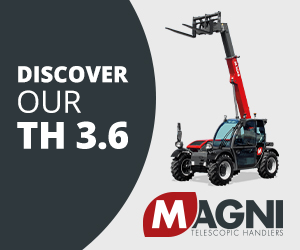)
Safe lifting in ports and at sea
Ross Moloney, CEO of the Lifting Equipment Engineers Association (LEEA) on raising awareness of lifting responsibilities in wet logistics operations.
Lifting equipment plays a vital role throughout the world of what might be termed ‘wet logistics’. Across maritime and port operations, where smooth operation depends on being able to lift, reliability leading to minimised downtime is the key to efficiency. But it is safety that is paramount in any lifting operation. Ignorance in relation to lifting can result in severe consequences beyond handicapping a company’s progress: an accident, a visit from health and safety inspectors and, ultimately, punishment.
This must be clearly understood not only by those directly affected but also those held responsible. To concentrate directors’ minds it is worth noting that recent crane-related fatalities have resulted in multi-million pound fines, corporate failure, disbarment from being a director and in some cases jail sentences.
It is vital that duty holders in wet logistics operations are aware of all their legal responsibilities. They must ensure that those undertaking the tasks are suitably qualified, experienced, trained and equipped – in short, competent for their task. For external organisations, the duty holder must have procedures in place for vetting their competency.
In addition, duty holders should recognise what best practice looks like so they can make it normal practice. A good first step is to download LEEA’s latest and freely available COPSULE (code of practice for the safe use of lifting equipment). This is a recommended code of practice, providing comprehensive guidance on safe lifting practice; authoritative information written by impartial industry experts; up-to-date industry practice and globally applicable guidance.
A further step would be to take the Lifting Equipment End User Guidance course that, as I discussed in May, has been created by LEEA to educate company directors, senior managers and responsible persons in any end user markets where lifting equipment is used, and to provide an essential insight to general legal responsibilities for lifting equipment for duty holders.
The course is complemented by a series of Zoom-based events for specific end user markets – the first being aimed at the wet logistics, maritime and ports end user sector. This free, two-hour ‘open house’ will provide information on sector specific issues such as one-trip slings, load restraints and relevant equipment. End users can gain an understanding of their legal obligations, best practice, and smarter procurement of third party practices. They can also put questions to experts in the kind of neutral environment that a trading association forum can offer.
A final and simple step for wet logistics operations seeking to mitigate risk when procuring lifting equipment or supporting services is to look for the LEEA logo. This shows that the service provider is a member of the Lifting Equipment Engineers Association – which is established across the globe as the leading representative body for all those involved in the lifting industry worldwide. To become an Association member, the provider will have undergone a rigorous auditing process to uphold LEEA’s ‘gold standard’ and provide customers with the assurance of excellence and compliance to standards and legislation. LEEA’s audit process provides reassurance to the many tens of thousands of duty holders – often with little personal knowledge of the subject – who bear responsibility for the safe design, maintenance and operation of the lifting equipment their firm buys, hires or contracts in. Through using an audited LEEA member, wet logistics users of lifting equipment gain a guarantee that those aspects of their responsibilities have been faithfully and professionally discharged.











